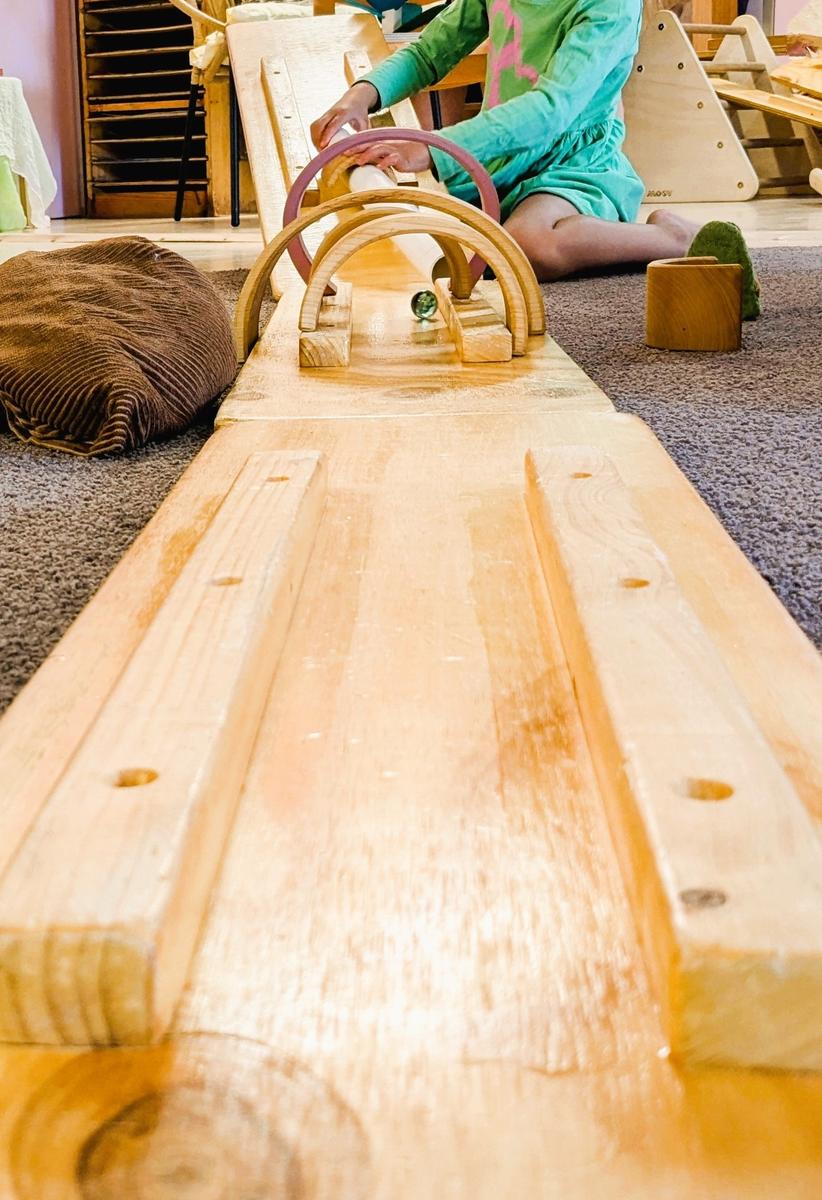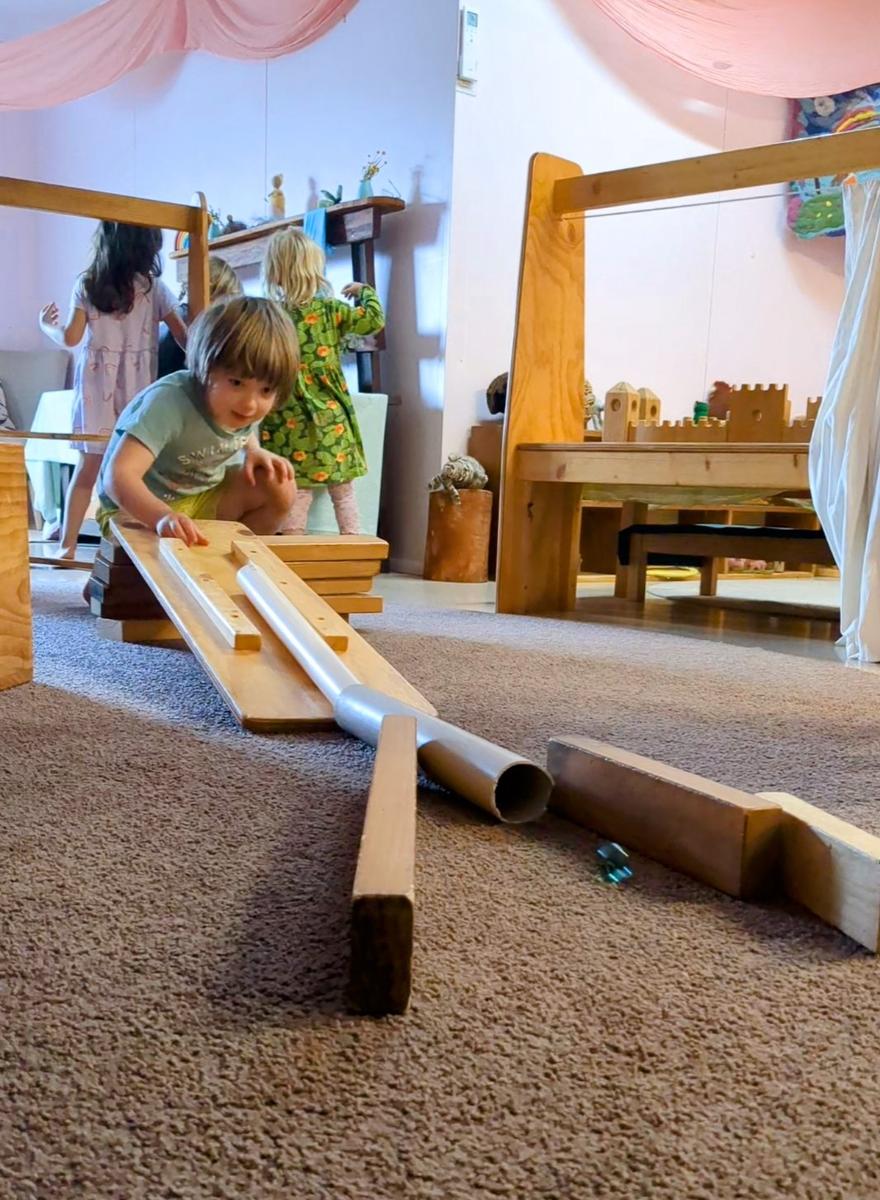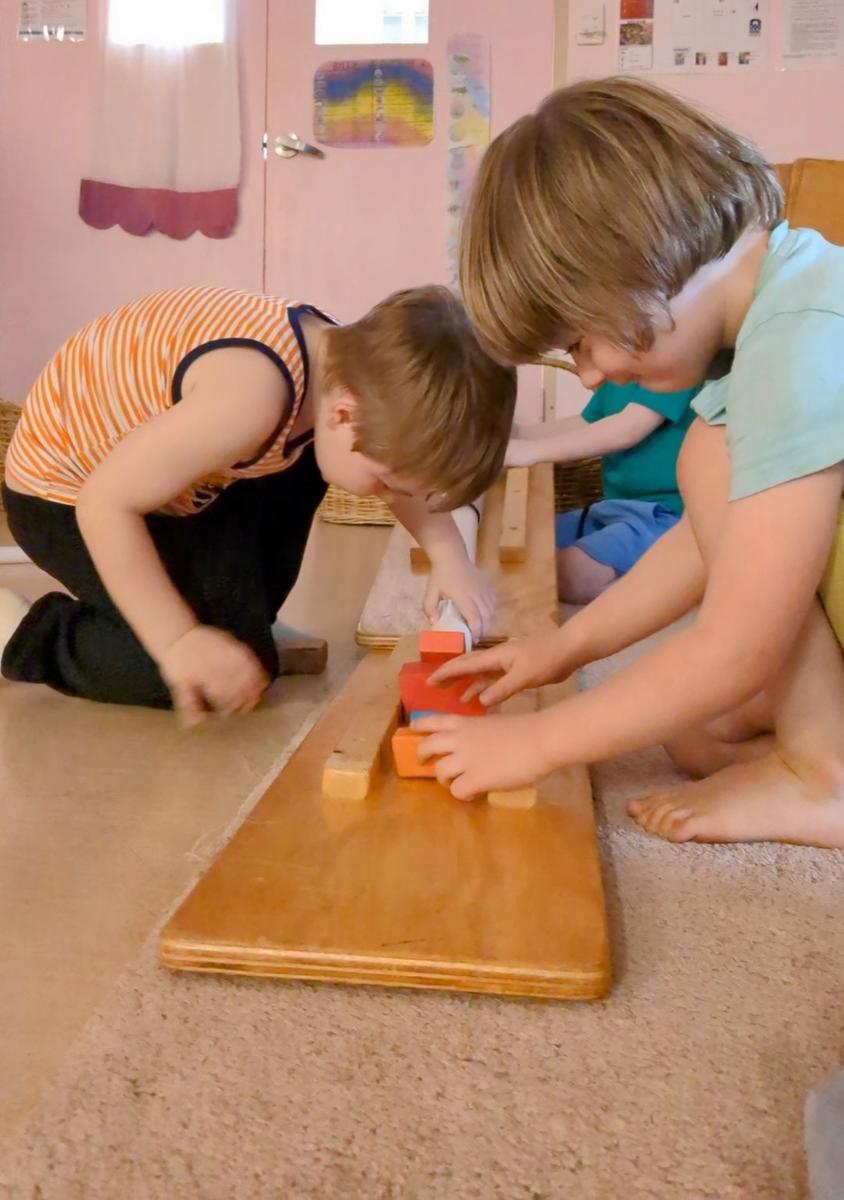Ruby Saltbush News
DIERDRE AILA & FARISHTA YOUSAFZAI

Ruby Saltbush News
DIERDRE AILA & FARISHTA YOUSAFZAI
Understanding Loose Parts Play
The beauty of children is that they see possibilities in everything. Objects are never just one thing. A handful of rocks, a stick, a feather, a sheet or a piece of rope can become something magical through imagination and play.
At The Alice Springs Steiner Preschool, we see daily how loose parts play inspires creativity, problem-solving and connection. When children are free to explore open-ended materials, their learning deepens and their curiosity flourishes.
In Ruby Saltbush there has been such a big interest in creating marble runs in the building area. Children have experimented with wood frames, blocks, cardboard tubes, arches, chairs and cloths to make the marble turn, go through tunnels and obstacles, even jump! Some children have preferred designing and problem solving on their own, others have enjoyed cooperating to share ideas, test theories and celebrate discoveries together.










Loose Parts and Open-Ended Learning
Open-ended learning and loose parts play are connected concepts that both offer similar outcomes - allowing kids to discover their world and have fun with the process.
With open-ended learning, children are encouraged to learn without set parameters or rigid rules of structured play. There is no right or wrong answer or way of doing things. Loose parts play is much the same. Two kids can be presented with the same collection of loose parts and create two completely different things. Neither is right or wrong. Both are free to make the learning experiences their own and the possibilities are endless!
How Loose Parts Play Benefits Teachers... and Teaching
In Ruby Saltbush we love seeing children develop and discover new interests and ideas. Our role is to prepare the environment, provide rich materials, and then step back—supporting when needed, but allowing the children’s ideas to lead. This approach helps us truly meet each child where they are, honouring their individual rhythms and inspirations.
The Benefits of Loose Parts Play
There is no defined purpose and no one tells children what they are supposed to do with them at playtime so they are free to see possibilities in these materials, and to come up with creative ways to make the most use of them.
With minimal input from adults, a child engaged in loose parts play can think for themselves, set their own agenda and define their own methods and objectives to use them.
Due to its open-ended nature, loose parts play can present many obstacles or challenges to overcome in order to achieve their play objectives. Overcoming all these challenges sharpens problem-solving skills.
Because loose parts play is open-ended and child-led as opposed to adult-led, it offers so many more possibilities and children tend to get highly involved in it, which in turn develops their ability to concentrate for longer.
Loose parts play tends to involve a lot of questioning, narration, negotiation and exchange of ideas. As language is explored, and phrases are even made up to better describe things or share ideas, vocabulary is developed and conversational skills are improved as children communicate their ideas and knowledge with other children and teachers.
While engaged in loose parts play children will usually take on varying roles at different points and act out a variety of dialogues and stories. They get to view the world through different perspectives, gain a better understanding and appreciation of the world and people in it and they grow in confidence and self-assurance.
There is a slight level of risk associated with some forms of loose parts play, such as building structures with sticks and then walking on or climbing over them; therefore, children that frequently engage in such safe risky play usually become better at taking and managing risks in general. Exposing children to controlled risks has positive effects on their psychological and emotional development.
When they are not fiddling with, sorting, positioning or balancing, children engaged in this kind of play are picking up, transporting, constructing, and manoeuvring a variety of objects. All these involve different physical movements which help to speed up the development of gross and fine motor skills in children.
Loose parts open the door to self-directed, imaginative play. These humble materials, when combined with time, space and the support of an interested adult can have many benefits for a child’s learning, growth and development.
Please enjoy these photos of the class working on a variety of marble runs over the last week.
With love,
Dierdre and Farishta